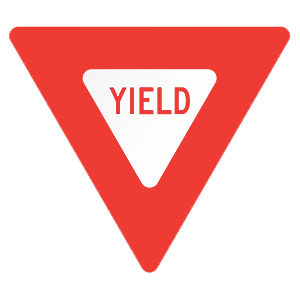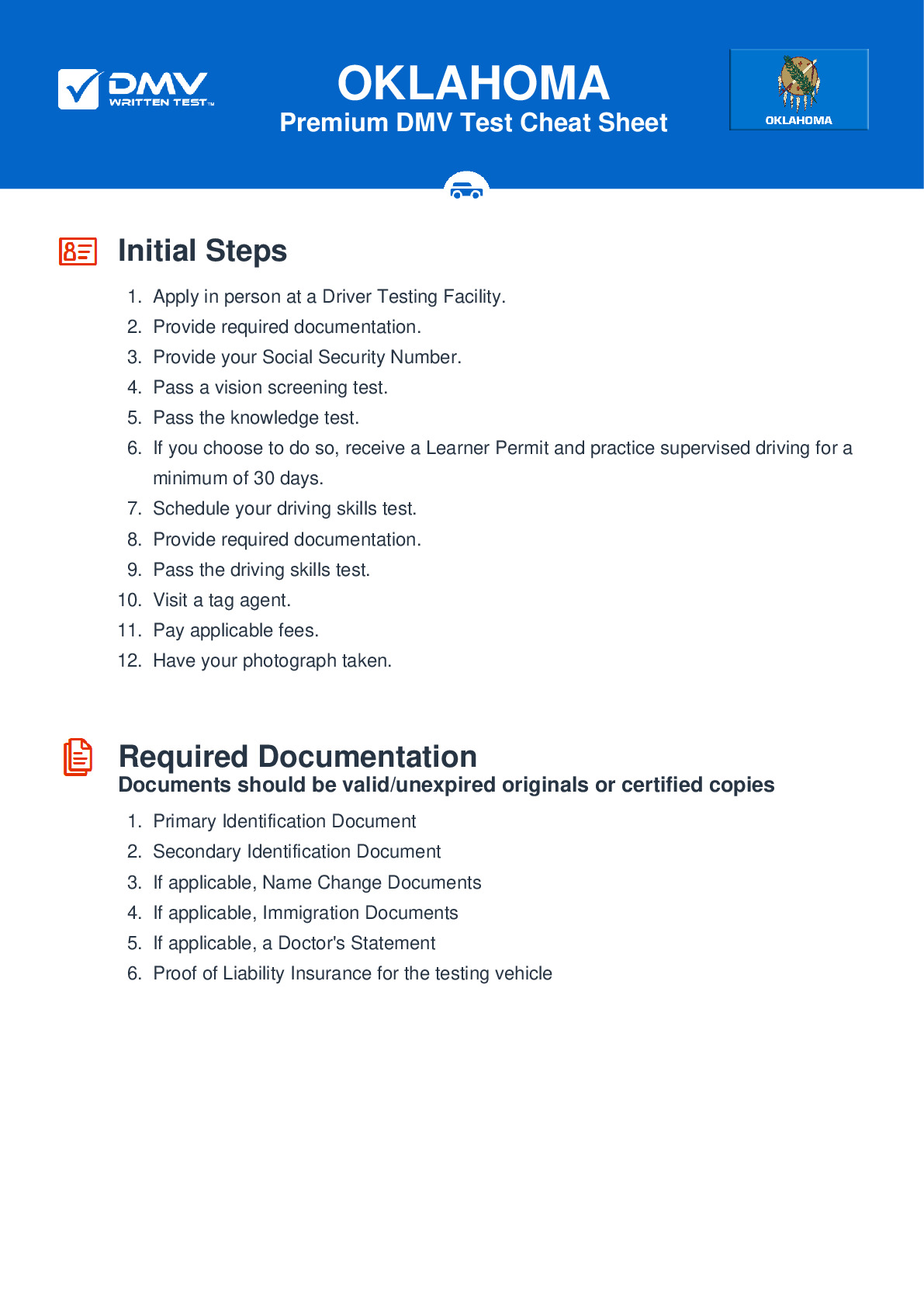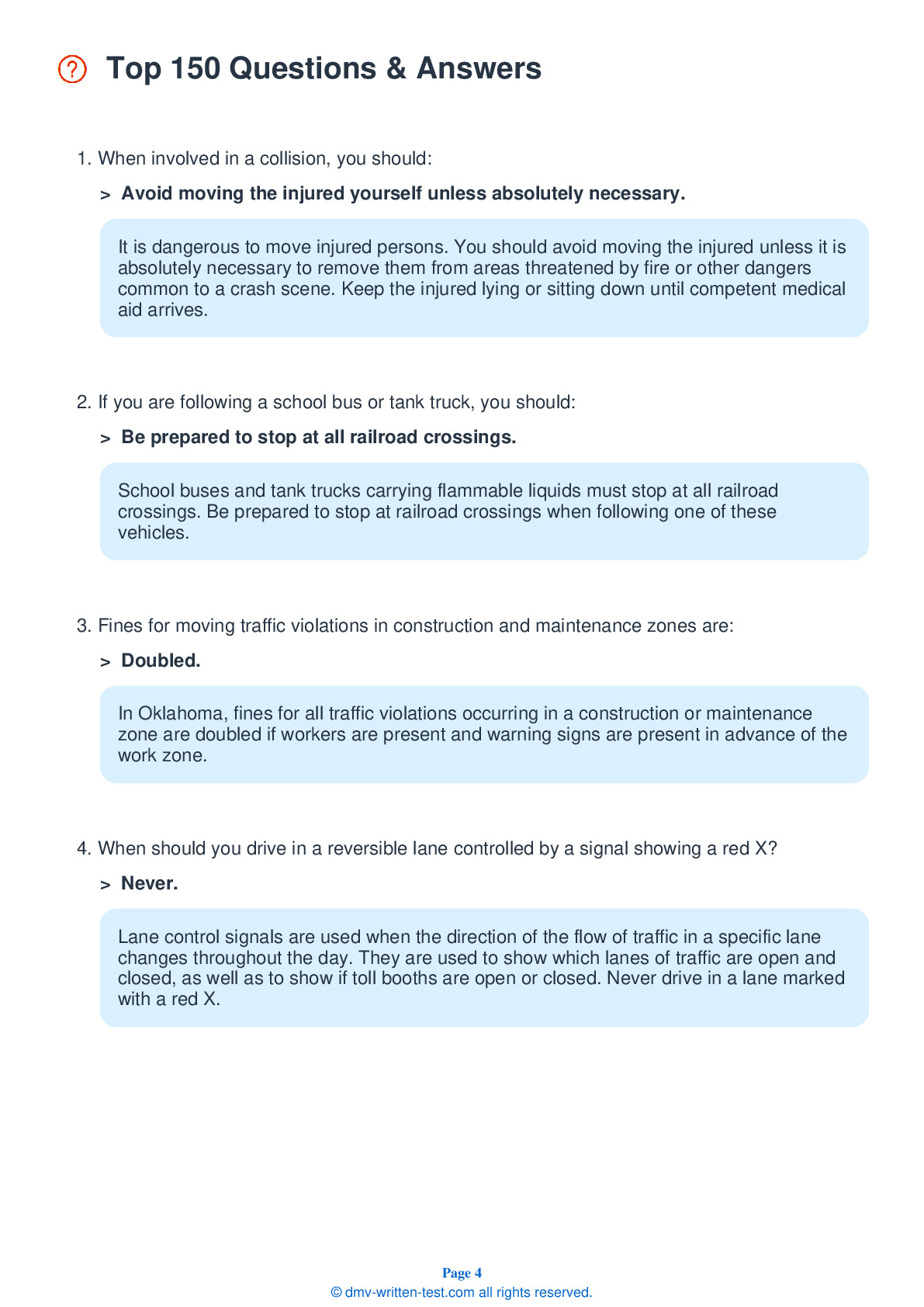2025 Oklahoma Permit Test 13
The following questions are from real DMV written tests. These are some of the actual permit questions you will face in Oklahoma. Each permit practice test question has three answer choices. Select one answer for each question and select "grade this section." You can find this button at the bottom of the drivers license quiz. For a complete list of questions and answers for Oklahoma please visit https://cheat-sheets.dmv-written-test.com/en/oklahoma/car.
Number of Tests
Number of Question
Passing Score
1. You experience an incident at work that has left you feeling angry. When you get to your car, you should:
Explanation
Persons who are upset, angry, or otherwise distracted by their emotions should take time to cool off before driving a car. Taking out frustrations or anger while driving is exercising very poor judgment and is very dangerous to both the driver and others on the road.
2. What does a lane control signal displaying a flashing yellow X above a reversible lane indicate?
Explanation
Lane control signals are used when the direction of the flow of traffic in a specific lane changes throughout the day. They are used to show which lanes of traffic are open and closed, as well as to show if toll booths are open or closed. When a lane control signal contains a flashing yellow X, drivers may only use the indicated lane to complete a left turn.
3. A person who drives much slower than the speed limit:
Explanation
Driving more slowly than the flow of traffic can be hazardous. If you are on a two-lane, two-way road and driving so slowly that traffic is backing up behind you, you are required to pull off the road and let the other vehicles pass. Only drive significantly under the speed limit when conditions require it.
4. When you intend to back up, you should always check behind your car for bikes, tricycles, and small children before entering the car.
Explanation
When you intend to back up, always check behind your car for bikes, tricycles, and small children before you get into your car. This is an especially important practice for drivers of larger vehicles, such as vans and trucks.
5. You may pass another vehicle:
Explanation
You may not pass another vehicle on a hill or in a curve because you cannot see oncoming traffic and may cause a collision. Never pass another vehicle by driving onto the shoulder of a highway. Passing another vehicle by driving over a solid yellow line is prohibited.
6. You should allow an extra cushion of space:
Explanation
Drivers of trucks, buses, vans, or any vehicles pulling campers or trailers may not be able to see you if you are driving directly behind them. Increase your following distance when driving behind one of these vehicles. Additionally, large vehicles can block your view of the road, so increase your following distance to look around the sides of the vehicle and see the road ahead.
7. This sign means:

Explanation




